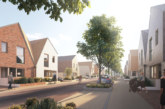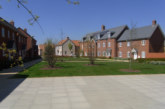
Bill Bidder, Head of Real Estate and a partner at IBB Solicitors, gives his guidance on the core considerations so that developers can be forewarned and plan ahead.
A right of light is a right to enjoy natural light, through defined openings in a building (including windows with or without glass, skylights and glass roofs), of a level sufficient to allow the building to be used “according to the ordinary notions of mankind”. Rights of light can be obtained by express grant or by enjoying the right for a period of 20 years.
If you are intending to develop property, you will need to consider at an early stage whether any neighbouring buildings may have rights of light, as while private rights of light are not planning considerations, any infringement could have a substantial impact on the viability of a scheme.
Risks
If any buildings do enjoy rights of light and you proceed with a development, any party whose rights of light are infringed may be able to obtain an injunction or significant damages.
An injunction could require you to stop building, or to demolish the offending parts of the development. If damages are awarded, these can be assessed as being a proportion of your profit from the offending part of the development, or by reference to loss of amenity.
There is no mathematical formula for assessing the remedy – a judge will determine a settlement depending on what “feels right”.
What you can do
If there is a risk of rights of light being infringed:
- Contact solicitors, who can check the title and advise whether the property has the benefit of express rights which allow building, even if light to a neighbouring property is materially reduced – such rights are often granted or reserved on a sale of part. They will also be able to contact specialist insurers to determine if insurance is available to cover any financial losses arising if rights of light are enforced.
- Instruct a specialist surveyor to assess whether there is any actionable impact on light to any nearby buildings. A surveyor may also carry out modelling to produce a ‘cutback scheme’ for the development which avoids infringing rights of light.
- If insurance is not available, then you can either revise the scheme to remove any actionable reduction in light to the relevant buildings or approach the affected parties to negotiate an express release.
- If you change your scheme at any stage, check that the revised scheme does not result in any greater interference with rights of light.
What you should not do
If you think that there may be an issue, do not proceed without obtaining specialist advice (ideally before you purchase the land as this will enable you to properly assess the risk and include rights of light costs in your viability calculations).
Do not approach the affected parties if there is a possibility of obtaining insurance – you will be putting the owners on notice that there is an issue and so insurers will likely refuse to cover the risk.
Do not assume that a new building will not enjoy rights of light. If the new building replaced an old building with windows in substantially the same position, the new building can inherit rights of light.









